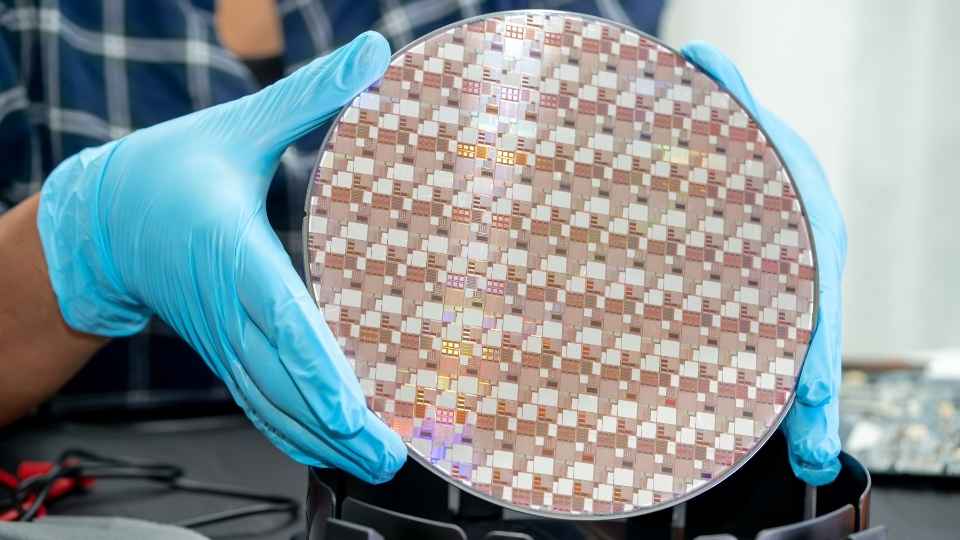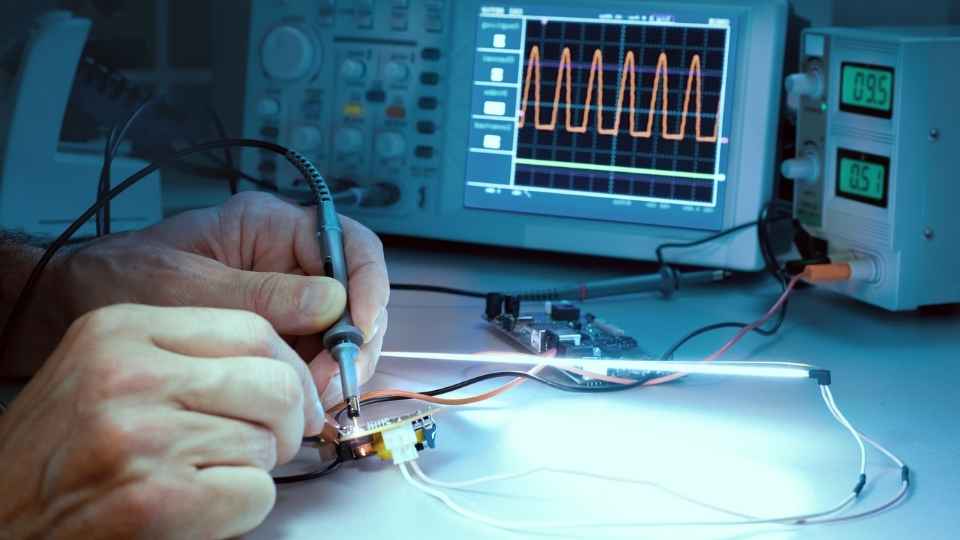
In the realm of factory automation, one technique has emerged as a game-changer: SCADA systems. These sophisticated yet ingenious tools have the power to revolutionize factory processes, paving the way for unprecedented levels of efficiency and productivity.
As an automation engineer, understanding how to leverage SCADA systems is crucial in this modern era of industrial innovation. In this article, we will explore the intricacies of SCADA systems and delve into key strategies for seamlessly integrating them with PLC programming to truly transform factory operations.
Get ready to unlock a new level of freedom in your pursuit of factory excellence.
Key Takeaways
- SCADA systems monitor, control, and optimize industrial operations
- Key components of a SCADA system for factory processes include HMI software, RTUs, communication infrastructure, and data historian
- Designing and implementing SCADA systems involves assessing requirements, analyzing existing infrastructure, selecting a scalable solution, and providing proper training and support
- Integration of SCADA systems with PLC programming enhances efficiency and productivity by enabling real-time monitoring, centralized control, remote accessibility, and detailed data collection and analysis
The Basics of SCADA Systems in Factory Automation
SCADA systems are integral to revolutionizing factory processes as they provide a comprehensive and efficient means of monitoring, controlling, and optimizing various industrial operations. These systems consist of multiple components that work together seamlessly to collect data from sensors and devices across the factory floor.
The data is then transmitted to a central control room where it is displayed on operator screens in real-time. This allows operators to monitor the status of different processes, identify potential issues or bottlenecks, and make informed decisions to optimize production efficiency.
Key components of a SCADA system for factory processes include Human Machine Interface (HMI) software, Programmable Logic Controllers (PLCs), Remote Terminal Units (RTUs), communication networks, and data historians. Each component plays a crucial role in ensuring the smooth operation of the system and enhancing overall productivity.
Key Components of a SCADA System for Factory Processes
One essential aspect of enhancing factory operations is to implement a comprehensive system that includes components like real-time monitoring, data acquisition, and control functionality. A SCADA (Supervisory Control and Data Acquisition) system is an ideal solution for this purpose.

Here are the key components of a SCADA system for factory processes:
Human-Machine Interface (HMI): This graphical interface allows operators to interact with the SCADA system, providing them with real-time information and control options.
Remote Terminal Units (RTUs): These devices collect data from various sensors and equipment on the factory floor, transmitting it to the central SCADA server for analysis.
Communication Infrastructure: A reliable network infrastructure is crucial to ensure seamless communication between RTUs and the central server.
Data Historian: This component stores and archives all collected data, allowing for historical analysis and trend identification.
Designing and Implementing SCADA Systems for Factory Efficiency
To enhance efficiency in factory operations, it is essential to carefully design and implement a comprehensive system that integrates various components for real-time monitoring, data acquisition, and effective control functionality. This can be achieved through the use of Supervisory Control and Data Acquisition (SCADA) systems. SCADA systems provide a centralized platform for monitoring and controlling industrial processes, allowing for streamlined operations and improved productivity.
When designing and implementing SCADA systems for factory efficiency, several factors need to be considered. First, it is important to assess the specific requirements of the factory processes and identify the key areas where automation can bring significant improvements. Next, a thorough analysis of the existing infrastructure should be conducted to determine compatibility with SCADA technology.

Once these initial steps are completed, an appropriate SCADA solution can be selected based on factors such as scalability, flexibility, and ease of integration with existing systems. The chosen solution should include features like remote access capabilities for real-time monitoring from anywhere at any time.
Furthermore, it is crucial to ensure proper training and support for operators who will be using the SCADA system. This will enable them to effectively utilize its functionalities and maximize its potential in improving factory operations.
Integrating SCADA Systems With PLC Programming for Seamless Automation
Integrating Supervisory Control and Data Acquisition (SCADA) systems with Programmable Logic Controller (PLC) programming allows for seamless automation of industrial processes. This integration creates a powerful combination that optimizes efficiency, increases productivity, and ensures the safety of factory operations.
Here are four key benefits of integrating SCADA systems with PLC programming:
Real-time monitoring: SCADA systems provide operators with real-time data on various parameters such as temperature, pressure, and flow rates. This enables quick identification of any anomalies or deviations from desired values.
Centralized control: By integrating SCADA systems with PLC programming, operators can control the entire system from a central location. This eliminates the need for manual intervention at individual components, streamlining operations.
Remote accessibility: SCADA systems can be accessed remotely through secure networks, allowing operators to monitor and control processes from anywhere in the world. This flexibility enhances operational freedom while ensuring constant oversight.

Data analysis and reporting: The integration of SCADA systems with PLC programming enables detailed data collection and analysis. Operators can generate comprehensive reports on process performance, enabling informed decision-making and continuous improvement.
Best Practices for Revolutionizing Factory Processes With SCADA Systems
Implementing industry-leading practices for the successful integration of SCADA systems in factory processes requires a thorough understanding of operational requirements and strategic planning.
When revolutionizing factory processes with SCADA systems, it is essential to follow best practices that ensure a seamless transition and optimal performance.
Firstly, conducting a comprehensive analysis of the existing processes helps identify areas where SCADA can bring the most significant improvements. This analysis should consider factors such as process complexity, data collection needs, and system scalability.
Secondly, designing a robust network architecture ensures reliable communication between different components of the SCADA system while maintaining secure data transmission. Additionally, incorporating redundancy measures reduces the risk of system failure and ensures continuous operation.
Lastly, implementing proper training programs for operators and maintenance personnel guarantees their proficiency in utilizing SCADA systems effectively.
Frequently Asked Questions
What Are the Potential Challenges or Limitations of Implementing SCADA Systems in Factory Processes?
Potential challenges or limitations of implementing SCADA systems in factory processes include compatibility issues with existing infrastructure, cybersecurity vulnerabilities, high initial costs, complexity of system integration, and the need for skilled personnel to operate and maintain the system.

How Can SCADA Systems Improve Overall Efficiency and Productivity in a Factory Setting?
SCADA systems can greatly enhance efficiency and productivity in a factory setting by providing real-time monitoring, control, and analysis of various processes. This enables quick identification and resolution of issues, optimization of operations, and informed decision-making.
Are There Any Specific Industries or Types of Factories Where SCADA Systems Are More Commonly Used?
SCADA systems are commonly used in industries such as manufacturing, energy, oil and gas, water treatment, and transportation. These systems provide real-time monitoring and control of various processes, enhancing efficiency, productivity, and safety within factories.
What Are Some Common Security Measures That Should Be Taken When Implementing a SCADA System in a Factory?
Common security measures to implement when integrating a SCADA system in a factory include network segmentation, strong authentication protocols, regular vulnerability assessments, intrusion detection systems, and continuous monitoring for anomalies.
Can SCADA Systems Be Integrated With Existing Legacy Systems or Do They Require a Complete Overhaul of the Factory's Infrastructure?
Can SCADA systems be seamlessly integrated with existing legacy systems or do they necessitate a complete overhaul of the factory's infrastructure? This question arises when considering how to revolutionize factory processes with SCADA systems.
 Basic Electronics ConceptsEssential ToolsCircuit Design BasicsMicrocontrollersDIY Electronics ProjectsRoboticsPrivacy PolicyTerms And Conditions
Basic Electronics ConceptsEssential ToolsCircuit Design BasicsMicrocontrollersDIY Electronics ProjectsRoboticsPrivacy PolicyTerms And Conditions
